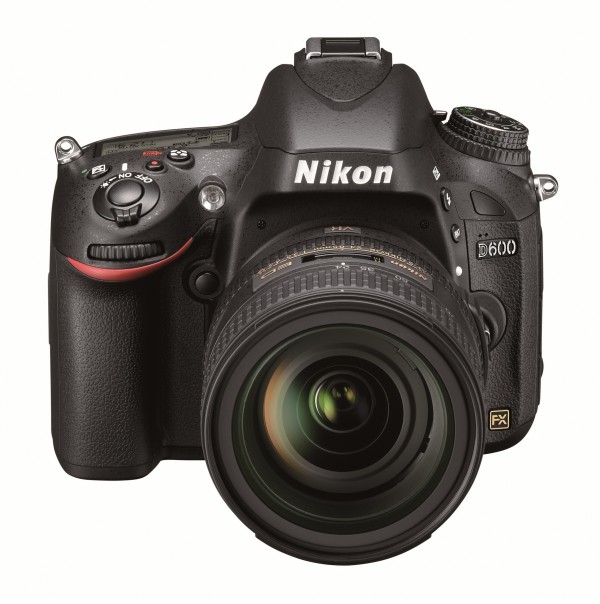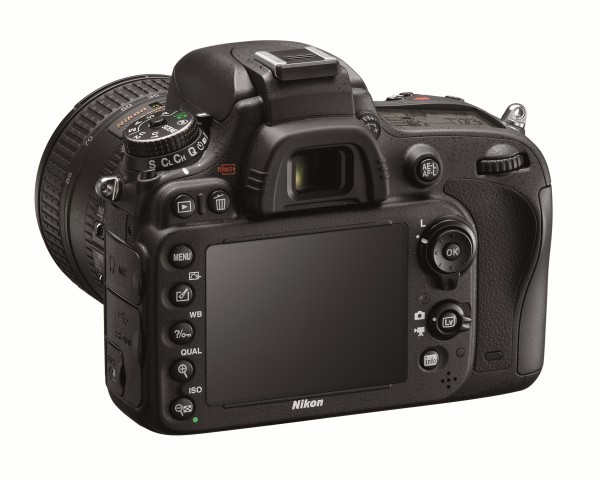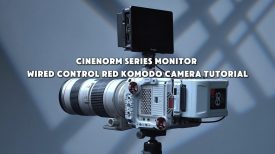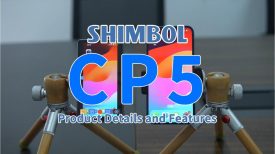Guest post by Sam Morgan Moore:
The new Nikon D600 appears to be a very welcome addition to the growing range of excellent cameras available to motion and stills shooters today. Currently the cheapest full-frame DSLR on the market, it is an attractive proposition with seemingly no major omissions in the specifications.
For little projects I want a camera that can do stills and motion and offer some nice zoom lens choices. My ‘mountain camera’ should be light enough to take on a hike, or indeed to a war zone, yet capable enough to produce stunning stills and beautiful motion with audio that can be relied upon. That multimedia spec seems to be met by the Nikon D600:
– It takes stills at a resolution that is perfect for a professional shooter
– Records video at 24P, 25P and 30P (also higher rates of 720/50P and 60P) – 25P is my must-have frame rate
– Has manual control of aperture and shutter speed while shooting video
– Has monitorable audio with a headphone jack and manual audio levels
– It can output a clean HDMI signal for monitoring or recording with an external Prores recorder
– Twin SD card slots make for easy separation of stills and video images, or back-up
– There is an internal AF motor for legacy Nikon AF lenses, which is important for stills shooters with older Nikon glass like my 20-35 f2.8. Most consumer Nikon DSLRs miss this AF motor and only focus with newer G lenses.
The big unknown at the moment is the quality of the D600 video image. I’m hoping it bests or equals its older sibling the D800 for resolution and sharpness, but does away with the aliasing and moire that plague that camera. We shall await test images. There is however one big reason why this camera interests me:
The Nikon full-frame lens advantage.
Nikon (Nikkor) lenses have become very popular with DSLR and large sensor camcorder users worldwide, with good reason. They are highly adaptable and I, like many of you, use them on Sony NEX camcorders as well.
Overall, Nikon have a very comprehensive pro lens line up. If you want f2.8 pro lenses there are the 14-24mm, 24-70mm and 70-200mm. There are also other options like the 16-35mm f4 VR and the older 17-35mm 2.8. In addition, there are millions of legacy Nikon manual focus lenses which can be purchased secondhand. Then there are the stacks of third party lenses and also the great Zeiss ZF lens range. These lens sets will surely please any shooter.
While I don’t often zoom during a take, I do like not having to change lenses between shots. To match the D600 I’ve been thinking about the newer Nikon 24-120mm f4VR and 28-300mm VR because they seem to offer adequate range to do entire jobs without removing the lens. The ISO100 minimum sensitivity (possibly 50 with boost but I’m not sure this works in video) might help reduce the need for deep ND filtration, another practical bonus.
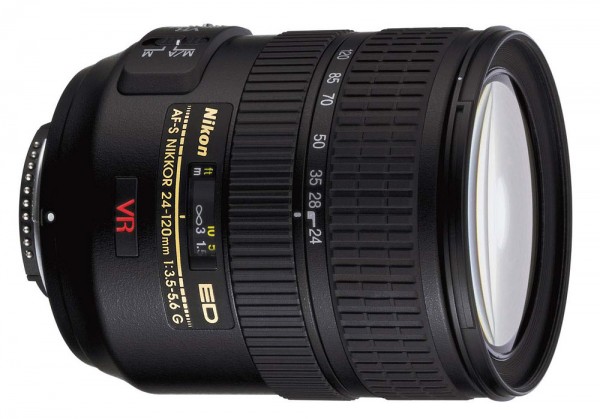
Both of these lenses offer the security of some image stabilisation for run and gun shooters. The 24-120 with a fixed F4 is fully capable of producing professional sets of images, still or motion. It is worth remembering that F4 with a full-frame sensor gives a narrow depth of field that is really as shallow as most people would want in a real world shooting situation. Indeed, both these lenses offer useful ranges simply not affordably available in the S35/APS-C format with the same depth of field characteristics. For me there is nothing like one-lens-shooting for concentrating on the subject.
Canon offer the popular 24-105mm IS lens for their cameras but I much prefer the extra reach of a 24-120mm. The Canon 28-300mm L IS lens is good but huge and heavy compared to the Nikon. Oh, and Canon don’t even have a 14-24mm lens in their line-up.
Another neat feature of the D600 is that you can change to a APS-C (close to Super35) crop mode at a flick of a switch and get a little extra magnification if you need it. You can also auto-engage this crop mode when APS-C crop DX lenses are mounted on the camera.
In general, professional Nikon G lenses have a better ‘focus feel’ for doing manual focus video than other brands’ AF lenses I’ve tried. Compared to those, they are acceptable, but not as good as a manual prime or dedicated cine lens.
As a shooter who is heavily invested in Nikon glass, from the 14mm f2.8 through to the 600mm F4, choosing a Sony or a Canon has always been a tough choice for me. I did buy the Canon 5D mkII for its ground-breaking (at the time) video mode, but the lens investment has always been a bit of a compromise – especially when I’ve found myself shooting stills using the 5D mkII and Nikon glass – which works for video but is clunky for stills without autofocus and auto aperture.
Of course, Nikon lenses focus the ‘wrong way’ around compared to professional video and cine lenses. Also, you’ll never get any Canon EOS glass to fit the D600. For a Canon shooter it’s not an appealing choice, but for me, as a shooter invested in Nikon glass, this camera is a good option.
The previous Nikon D4 and D800 never hit a price/performance point that worked for me, but this camera is different. Hopefully it has the same image quality at a much lower price (although sadly it’s not as cheap in Europe as it is in the USA).
Where could this camera fit in for me?
Current DSLRs can’t compete with a ‘proper’ video camera in terms of controls and functions. The downscaling of the DSLR image usually means the quality is OK, but not as good as cameras like the Sony FS100 or Canon C300. Like other DSLRs the D600‘s small, flimsy HDMI port is not ideal and the lack of XLR sound inputs mean that using many mics will involve an additional audio box or recorder and associated cabling.
But I won’t be using the D600 as an ‘A camera’ on an important project – that’s not the point. If the video quality is on par with the D800 and 5D mkII it will be good enough for B-roll, indie films and web spots. Ultimately it probably won’t match the Sony FS100 or Canon C300, but if the image quality is good enough then it will become my primary stills camera and my ‘B camera’ for video purposes, giving me a full-frame alternative to the FS100 when I need it. It will be great for multi-cam shoots and at times when I might need to be discreet.
Would I choose the D600 as my primary camera on a budget? Hard to say. Thankfully I have my FS100 and don’t need to make that choice. If a) full-frame is your thing, b) you primarily need a stills camera, or c) you need a second camera for a Nikon-based lens system, then the D600 is worth investigating further. Canon EOS-based shooters should probably look elsewhere.
Here is the full press release from Nikon:
RRP:
D600: £ 1955.99 /€2385.99
D600 with 24-85mm: £ 2443.99 / € 2981.99
WU-1b: £64.99 / €79.00
Sales start date: 18th September 2012
London, UK, 13 September 2012: Nikon today announces a new 24.3-megapixel FX-format D-SLR, the Nikon D600.
The smallest and lightest full-frame D-SLR Nikon has ever crafted, the compact Nikon D600 is set to change the game for enthusiast photographers.
Equipped with an FX-format image sensor as used in Nikon’s professional cameras, the surprisingly lightweight Nikon D600 will give many more photographers the chance to explore the advantages of full-frame photography. Suitable for a wide range of subjects and shooting situations, the D600 will allow photographers to experience a new level of depth and detail.
Hiro Sebata, Product Manager for Professional Products, Nikon UK says: ““We are delighted to introduce the Nikon D600, a small, lightweight full-frame camera that offers the exceptional performance capabilities found in Nikon’s D4 and D800 cameras.
He adds: “The D600 will open up new realms of photography for passionate photographers, particularly those looking to take the next step and enjoy the creative edge that comes with a full-frame sensor.”
Exceptional depth and detail
Nikon’s newly developed 24.3-megapixel FX-format CMOS sensor delivers outstanding levels of detail and tonal range, even in low light situations.
From true wide-angle to super telephoto, the 14-bit A/D conversion and excellent signal-to-noise ratio enable images of remarkable quality with low noise and wide dynamic range even at high ISO sensitivities.
Offering an ISO range of 100–6400, extendable up to 25,600 (equivalent) and down to 50 (equivalent), low light capability is superb. The camera’s intelligent noise reduction systems manage noise without sacrificing fine details, allowing superb flexibility under all lighting conditions: images are crisp and clean, even at higher ISO settings.
EXPEED 3 image processing
Equipped with the same state-of-the-art EXPEED 3 image-processing engine as Nikon’s flagship D4, the Nikon D600 makes light work of data-rich tasks without sacrificing speed and quality.
16-bit image processing offers richer colours and tones than ever before, delivering smooth gradations with abundant detail and tone all the way up the scale to pure white, even when shooting in JPEG.
Highly sensitive autofocus system
The Nikon D600 enables superior subject acquisition in most lighting conditions thanks to Nikon’s newly developed Multi-CAM4800 39-point AF system that boasts AF sensitivity inherited from the flagship D4.
Compatible with lenses up to f/8 combined open aperture and sensitive down to -1 EV (ISO 100, 20°C/68°F), sharp shots are possible even in challenging light conditions. A variety of AF-modes such as Dynamic-area AF and 3D-tracking maintain focus on even the smallest subjects, however unpredictable their movements may be.
Broadcast quality video
Based on the same technology as Nikon’s acclaimed D800, the Nikon D600’s Multi-area D-Movie offers all the flexibility required for photographers who want to shoot video. A wide variety of movie applications, a comprehensive variety of frame rates and convenient custom controls, which enable full control over live view operation when filming, combine to ensure large format movie shooting at its best.
Frame rates: Full HD (1080p) movies can be recorded in 30p, 25p and 24p, with 60p, 50p and 25p options at 720p. Full HD movie clips can be up to 29 minutes 59 seconds long.
Multi-area mode: Full HD (1080p) recording is possible in both FX- and DX-based formats, enabling exceptional freedom of expression.
High-fidelity audio control: with the Nikon D600 movies sound as good as they look. A microphone jack allows use of an external stereo microphone for crisp sound recording and there is an audio out for external headphones.
Uncompressed HDMI output: the Nikon D600 offers the possibility to output an uncompressed live video stream at 1080p to external recorders, and output will automatically drop to 1080i if use of an external monitor is detected. The uncompressed data is output at the designated image size and frame rate, and is clean of the information overlay that can be simultaneously displayed on the camera’s TFT monitor.
Advanced scene recognition with 2,016-pixel RGB sensor
The Nikon D600’s Advanced Scene Recognition System incorporates Nikon’s renowned 2,016-pixel RGB metering sensor that meticulously analyses each scene for outstanding accuracy. It can detect human faces with startling accuracy through the optical viewfinder, and recognise a scene’s colours and brightness with unprecedented precision.
This level of detailed scene analysis is also utilised to support more accurate autofocus, auto exposure and i-TTL flash exposure results in a diverse range of compositional and lighting situations. For example, 3D-subject tracking is particularly improved when shooting smaller subjects.
Implementing Nikon’s highly-acclaimed Multi-CAM4800 AF system —with individually selectable or configurable 9-, 21- and 39-point coverage settings — the autofocus sensor module and algorithms have been re-engineered to significantly improve low light acquisition sensitivity capabilities to be compatible with a combined aperture up to f/8 with detection down to -1 EV (ISO, 20°C/68°F).
Simplified selection of AF modes such as AF-A, AF-S and AF-C is now possible without taking your eye away from the viewfinder.
Full-frame mobility
The surprisingly lightweight Nikon D600 is Nikon’s first FX-format camera to boast such a compact build. Combined with advanced options for image transfer, it offers the freedom to capture, and share, the full perspective from anywhere.
Compact, light and durable: built to withstand severe conditions, the Nikon D600 boasts magnesium alloy top and rear covers and weighs only 760 g (without battery). Weather-sealed to the same degree as Nikon’s professional D800 SLR, it offers enhanced resistance to moisture and dust.
Efficient power management: a re-working of the D800’s circuits now enables approx. 900 shots[1] of still image shooting or approx. 60 min. of movie live view[2]. All on one charge of a Rechargeable Li-ion Battery EN-EL15.
Storage media: high-speed dual SD-card slots support SDXC and UHS-I memory cards.
Data transfer: the Nikon D600 allows high-speed data transfer with Hi-Speed USB and wireless image transfer with the optional WU-1b Mobile Adapter.
Responsive and intuitive
Made to fuel passion for photography in any situation, the Nikon D600’s fast response, reliable operation and conveniently placed buttons and controls enable smooth, comfortable handling and the flexibility to respond quickly to even unexpected shooting opportunities.
Fast response: start-up is approx. 0.13 seconds[3], shutter release time lag is minimised to approx. 0.052 seconds[4], with continuous approx. 5.5 fps capability in FX- and DX-format.
High-precision, high-durability shutter: the shutter unit has been tested to 150,000 cycles of release to prove durability and precision. Boasts a speed range of 1/4000 to 30s; features an intelligent self-diagnostic shutter monitor and a drive unit designed to reduce the demand on power when the shutter is raised for extended periods during movie shooting.
Precision 8-cm (3.2-in.), approx. 921k-dot, wide-viewing-angle LCD monitor with automatic monitor brightness control: delivers bright, crisp image playback with wide colour reproduction capacity. LCD brightness is automatically adjusted according to the viewing environment.
Glass prism optical viewfinder: with approximately 100% frame coverage and 0.7x magnification (50mm f/1.4 lens at infinity, -1.0m-1).
Dual-axis electronic virtual horizon: offers accurate confirmation of level shooting by letting you check the LCD monitor, or the viewfinder, for both the camera’s position in relation to the horizontal plane and its pitch (forward or rear rotation).
Enhanced ergonomics: buttons and dials have been strategically laid out for fluid operation. Improvements around the shutter-release button mean your index finger can rest comfortably for longer periods of time, while the designated movie record button means you’re ready to trigger movie shooting in an instant. The camera also features dedicated buttons for ISO, White Balance, Image Quality, and bracketing.
In-camera creative tools
A variety of creative and practical in-camera tools such as HDR and filter effects help to make the most of every shooting opportunity and enable images to be perfected with ease.
Time-lapse shooting: Interval Timer Shooting enables the shutter to be triggered at preset intervals. Time-Lapse Photography saves images as movie files that allow slow action to be viewed in fast playback, with playback rates from 24 to 36,000 times faster than normal.
HDR (High Dynamic Range) shoots one overexposed and one underexposed frame in a single shutter release. The range can be widened by up to 3 EV for different looks, full of saturation and tonal gradation, while the smoothness of the edge where the two exposures meet can be adjusted for a more natural appearance.
Active D-Lighting: Nikon’s Active D-Lighting automatically retains the details in both dark and bright areas for stunning images with natural contrast when shooting in high-contrast situations.
Picture Controls: customise the look of your stills and videos by fine-tuning parameters such as sharpness, saturation, and hue. Directly accessed via a dedicated button.
Scene modes: 19 scene modes optimise settings such as shutter speed, ISO and aperture for superior results every time – an ideal way to quickly capture perfect shots.
In-camera editing menus: include an array of useful features including options to correct red-eye and colour balance, as well as D-lighting, RAW processing and resize options. Filter effects include Skylight, Cross screen, Miniature, Colour outline, Colour sketch and Selective colour. Quick retouch options include distortion control, perspective control, straighten and Fisheye. There is also an edit movie feature that enables the start and end point of movie clips to be designated in order to save them more efficiently.
Accessories
Multi-Power Battery Pack MB-D14 (optional): accommodates a variety of batteries including AA-sized batteries of various types and Nikon’s Rechargeable Li-ion Battery EN-EL15 (see specifications). The MB-D14 has its own dedicated shutter-release button and command dials for more comfortable composition when shooting with the camera in vertical orientation.
Creative Lighting System: compatible with Nikon’s creative lighting system, the Nikon D600 supports use of powerful and versatile iTTL Speedlight flash units such as the professional SB-910 or the easy-to-use SB-700.
WU-1b Mobile Adapter (optional): Nikon’s wireless mobile adapter allows images to be transferred directly to any smartphone or tablet, and enables the camera to be controlled remotely via the smart device. A great way to easily share high-quality images, preview shots on a larger screen or experiment with full-frame self-portraits.
Capture NX 2 (optional). Fast, powerful and creative image processing: to accommodate the imaging power of the Nikon D600’s 24.3 effective megapixels, the latest Capture NX 2 is faster than before and boasts full 64-bit compatibility.
Camera Control Pro 2 (optional). Versatile remote camera controls: the software offers numerous improvements to make the Nikon D600’s live view operation exceptionally smooth. Aside from controlling exposure mode, shutter speed and aperture, creative controls include remote start and stop for movie shooting and switching between live view for stills and movies.
ViewNX 2 (supplied). Browse, edit, share and more: this bundled, all-in-one software implements an easy-to-use interface and an array of editing functions, including basic editing of RAW files and D-Movies. Seamlessly integrates with my Picturetown, Nikon’s photo sharing and storage service.
Sam Morgan Moore shoot stills and motion projects for editorial and corporate clients. His website is www.sammorganmoore.com and he also designs camera support rigs for www.halfinchrails.com

